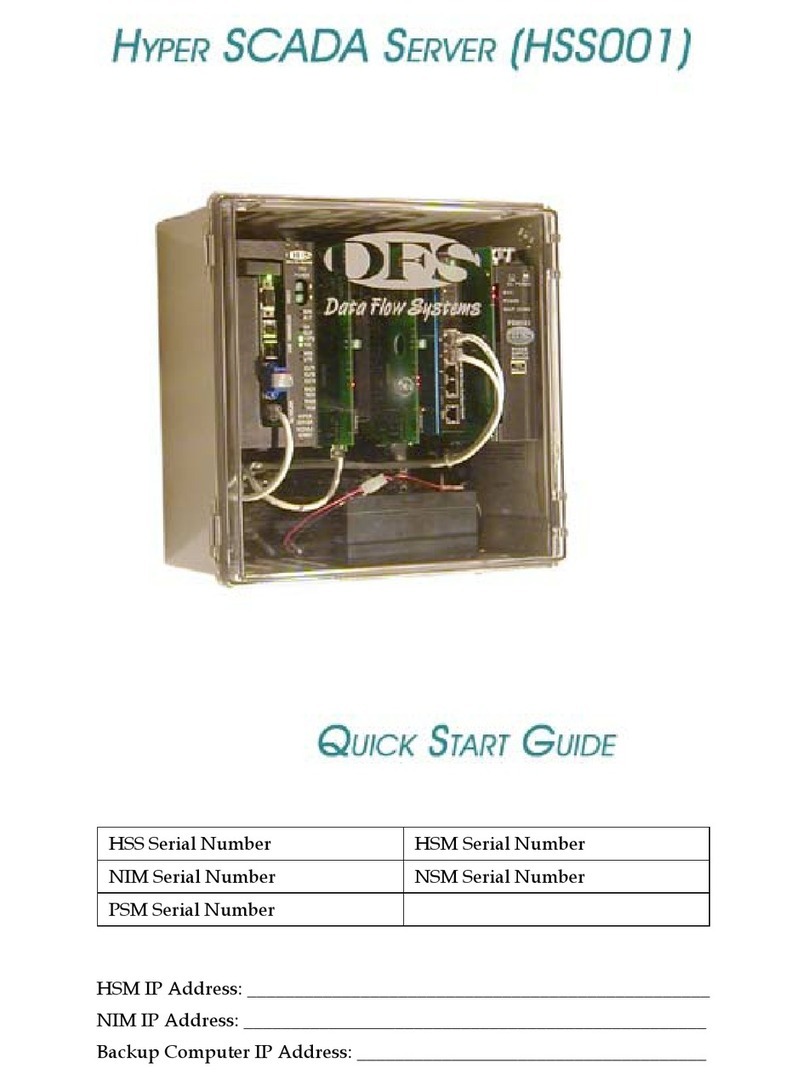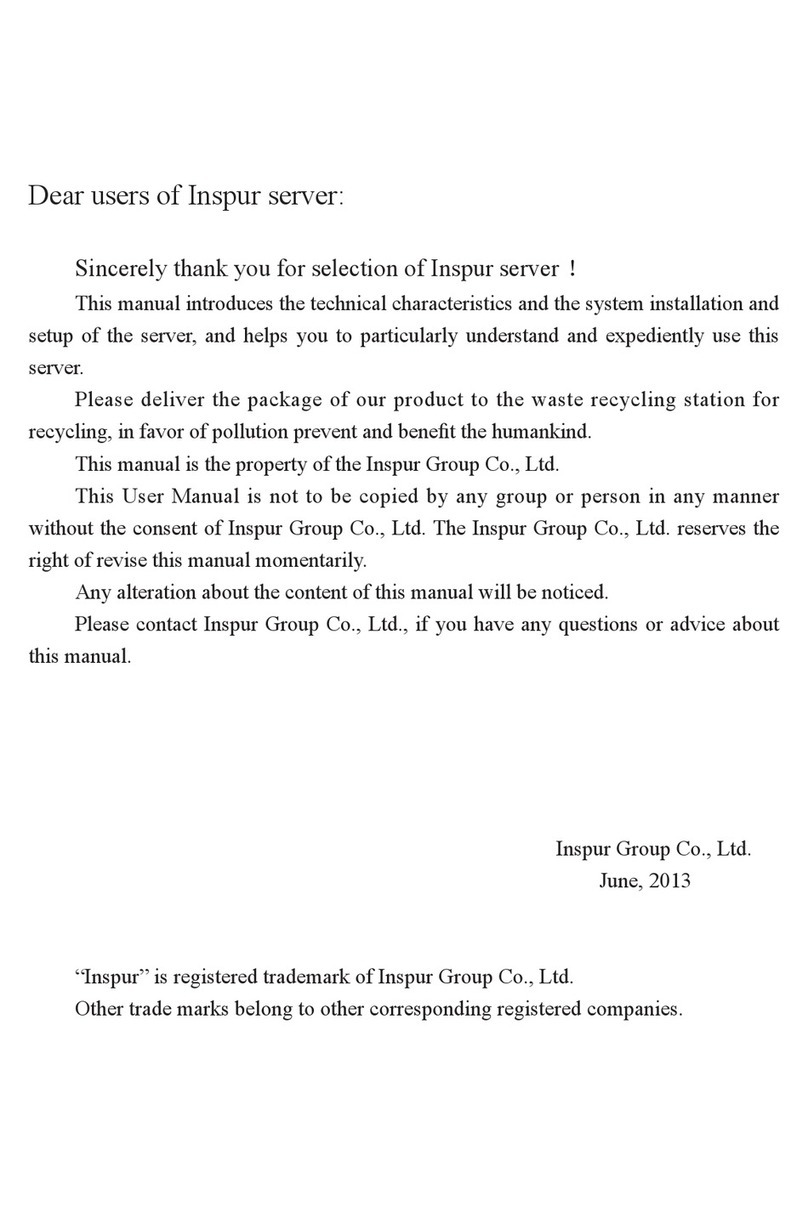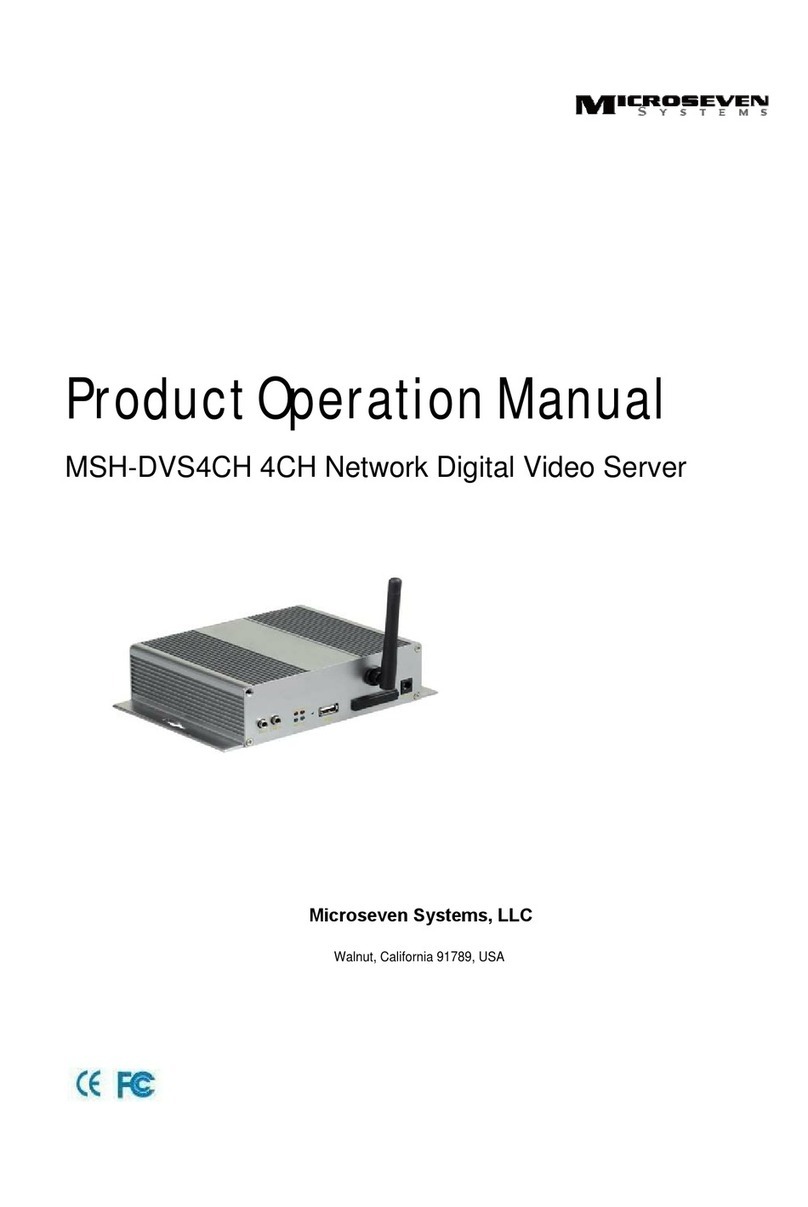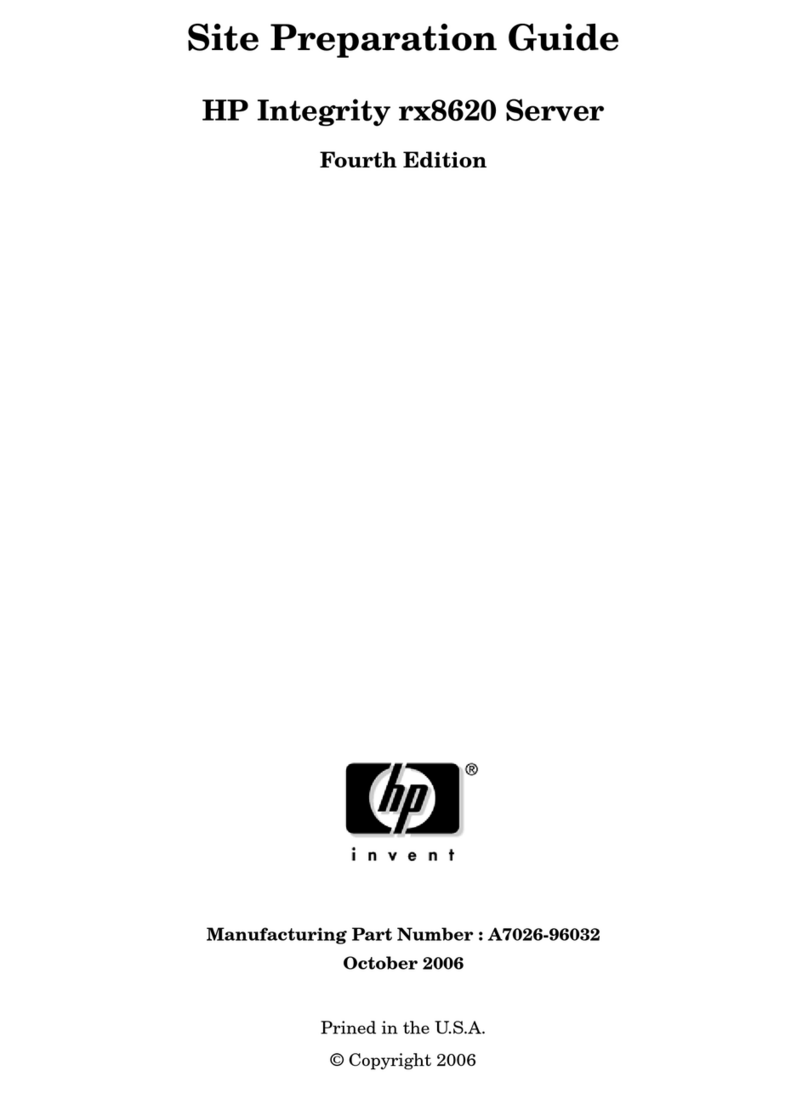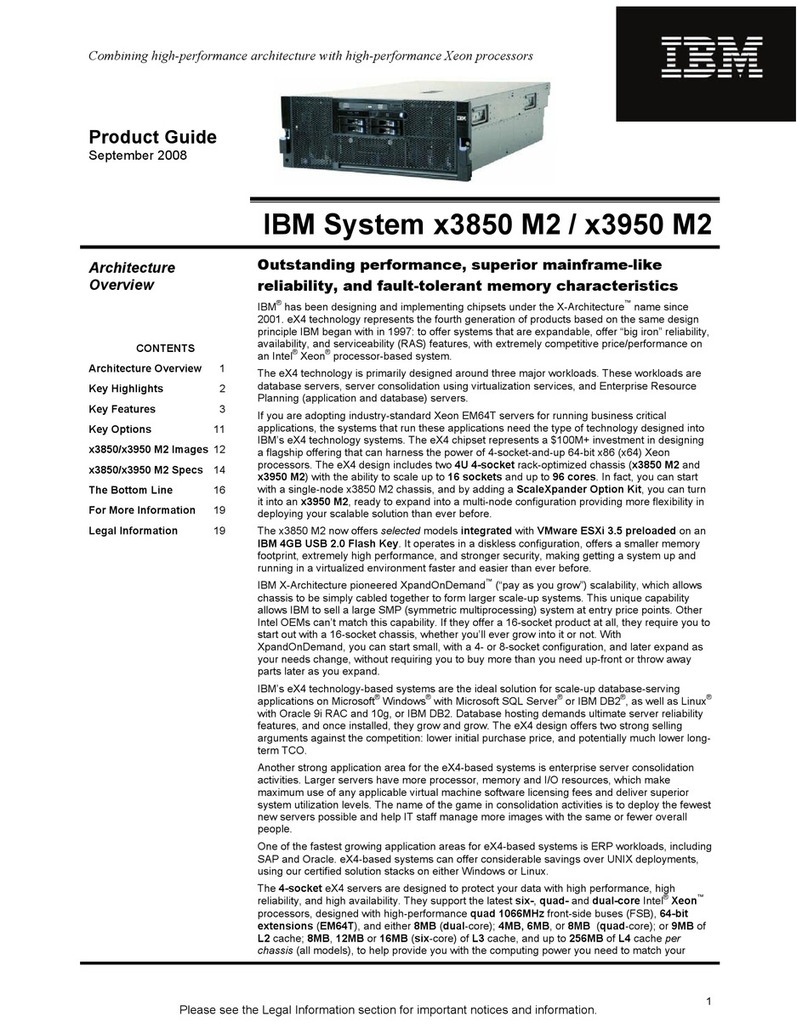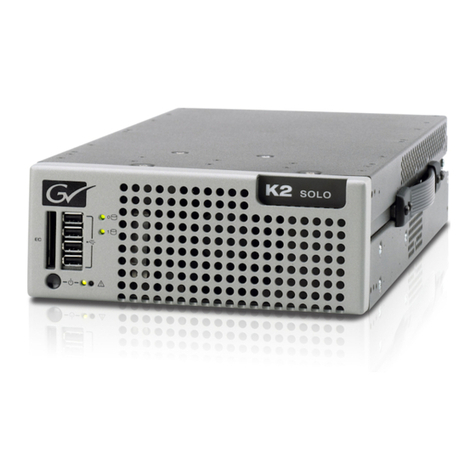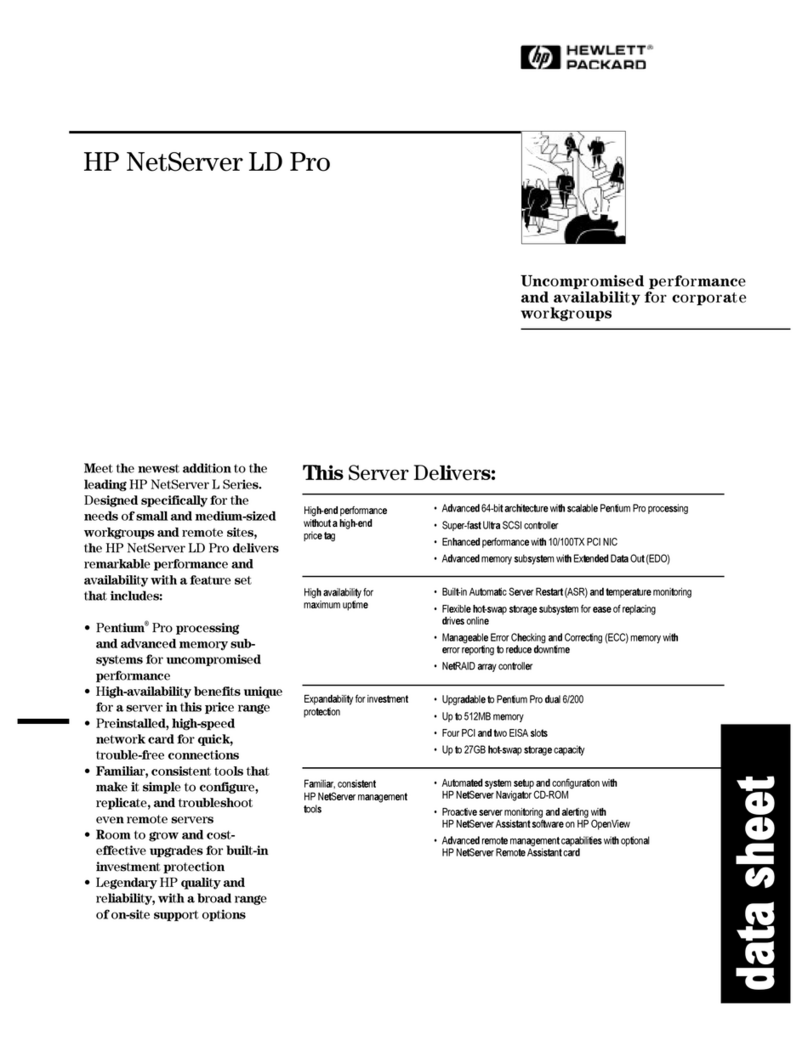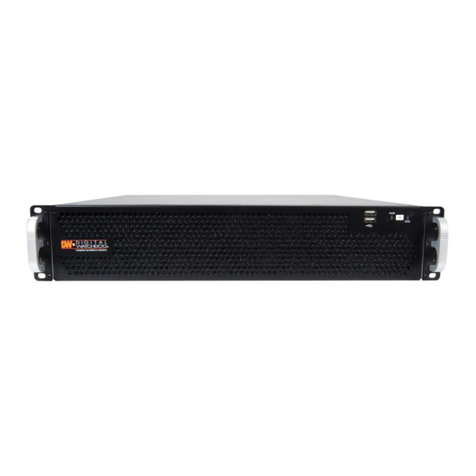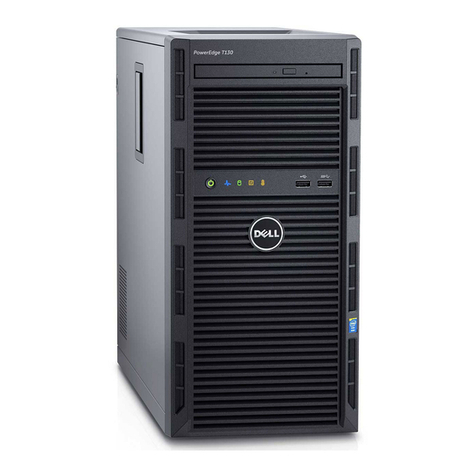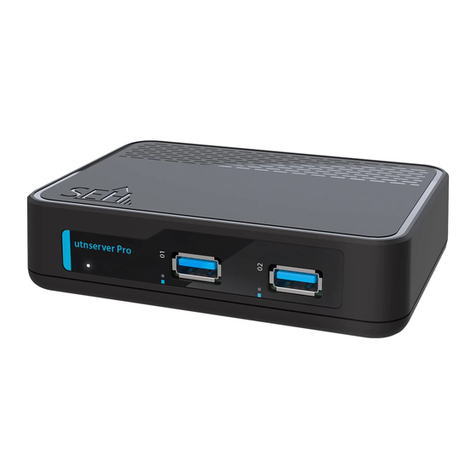Data Flow Systems TCU800 User manual

Installation and
Operation Manual
TCU800
Data Flow Systems, Inc.
Preliminary

Intentionally left blank.

Data Flow Systems, Inc. assumes no responsibility for any errors that may appear in this
document, nor does it make any commitment to update the information contained herein.
However, questions regarding the information contained in this document are welcomed.
Data Flow Systems also reserves the right to make changes to the specications of the
TCU800 and to the information contained in this document at any time without notice.
This document contains information related to special features and functions that are
only available when the TCU is utilized in a DFS TAC II SCADA System. These special
features and functions may not be available when the TCU800 is utilized in a 3rd party
SCADA System. If you are unsure about the availability of a feature or function, please
contact DFS for clarication.
© Data Flow Systems, Inc.
605 N. John Rodes Blvd., Melbourne, FL 32934
Phone 321-259-5009
Fax 321-259-4006
www.dataowsys.com
DFS-00540-011-01
This document was last updated November 17, 2020.
Notice

Data Flow Systems, Inc.
Intentionally left blank.

i
TCU800 User Manual
Preface iii
Purpose of this Manual.....................................................................................................................................................................................................iii
Document Conventions....................................................................................................................................................................................................iii
Abbreviations Used in this Manual..................................................................................................................................................................................iii
1. Safety Precautions 1
General Precautions..........................................................................................................................................................................................................1
Connecting/Disconnecting the TCU.................................................................................................................................................................................1
Protecting against Electrostatic Discharge........................................................................................................................................................................1
2. Product Overview 2
Description.......................................................................................................................................................................................................................2
Features............................................................................................................................................................................................................................3
Compatibility....................................................................................................................................................................................................................4
PIN Names/Wiring Denitions........................................................................................................................................................................................5
3. Unit Overview 9
User Interaction................................................................................................................................................................................................................9
Hand-Off-Auto (HOA) Switches.....................................................................................................................................................................................10
Soft Touch Button............................................................................................................................................................................................................10
USB Ports........................................................................................................................................................................................................................11
Touchscreen.....................................................................................................................................................................................................................11
Monitoring and Control...................................................................................................................................................................................................12
Digital Output Control.....................................................................................................................................................................................................13
Analog Input Monitoring.................................................................................................................................................................................................13
Serial Connectivity...........................................................................................................................................................................................................14
Phase Voltage Monitoring................................................................................................................................................................................................14
Internal Monitoring..........................................................................................................................................................................................................15
Automatic/Manual Control..............................................................................................................................................................................................15
Level Sensing Transducers..............................................................................................................................................................................................16
Internal Phase Monitor....................................................................................................................................................................................................17
Outputs.............................................................................................................................................................................................................................17
Touchscreen.....................................................................................................................................................................................................................18
Electrical Protection........................................................................................................................................................................................................18
Battery Backup (Optional)..............................................................................................................................................................................................18
Principles of Operation...................................................................................................................................................................................................19
Discrete System (Contact Closure Devices)...................................................................................................................................................................19
Analog System (Pressure Transducer)............................................................................................................................................................................21
4. Setup 27
Mounting Instructions.....................................................................................................................................................................................................27
Electrical Installation and Wiring Diagrams....................................................................................................................................................................28
Bias Voltage Source Options............................................................................................................................................................................................33
Installed in RTU...............................................................................................................................................................................................................44
5. User Interface 45
6. Operating Procedures 49
Conguring the Pump Control Process............................................................................................................................................................................49
Main Settings....................................................................................................................................................................................................................50
Alarm Outputs..................................................................................................................................................................................................................51
Floats................................................................................................................................................................................................................................51
Radio................................................................................................................................................................................................................................52
Auxiliary...........................................................................................................................................................................................................................54
Analog..............................................................................................................................................................................................................................55
Pump Monitoring..............................................................................................................................................................................................................57
Phase Monitoring.............................................................................................................................................................................................................57
Contents

ii
MODBUS.........................................................................................................................................................................................................................58
Derived Flow....................................................................................................................................................................................................................59
TCU Settings....................................................................................................................................................................................................................59
Radio Test Mode...............................................................................................................................................................................................................60
Reset Pump Stats..............................................................................................................................................................................................................61
Time..................................................................................................................................................................................................................................61
Auto Conguration...........................................................................................................................................................................................................61
Device Manager................................................................................................................................................................................................................62
Calibrate PMA..................................................................................................................................................................................................................62
Factory Reset....................................................................................................................................................................................................................62
Telemetry Conguration...................................................................................................................................................................................................64
7. Viewing and Troubleshooting Alarms 69
AC Power Fault................................................................................................................................................................................................................69
Auxiliary Input Alarm......................................................................................................................................................................................................70
DC Bias Fault...................................................................................................................................................................................................................70
Float Sequence Fault........................................................................................................................................................................................................71
High Well Alarm...............................................................................................................................................................................................................71
Phase Sequence Fault........................................................................................................................................................................................................71
Phase Voltage Fault...........................................................................................................................................................................................................72
Motor Starter Fault............................................................................................................................................................................................................72
Motor Stop Fault...............................................................................................................................................................................................................73
Transducer Fault................................................................................................................................................................................................................74
Leaving the Alarms Screen...............................................................................................................................................................................................75
8. Modbus Support 76
Appendix
A. Technical Specications 83
B. Checkout Procedure for Pump Controller 84
Step 1: Electrical Termination Review.............................................................................................................................................................................84
Step 2: Operations Testing................................................................................................................................................................................................85
C. Maintenance and Troubleshooting 87
Blown Fuse.......................................................................................................................................................................................................................87
TCU Replacement............................................................................................................................................................................................................88
D. Parts List 89
E. Mounting Instructions 96
F. Well Volume Calculations 101
G. Adding a RIO to the TCU 102
TCU Replacement............................................................................................................................................................................................................102
Congure RIO for Learn Mode........................................................................................................................................................................................103
Mount RIO and Wire AC Power and I/O.........................................................................................................................................................................104
Connect RIO to TCU........................................................................................................................................................................................................104
Place the RIO in Learn Mode...........................................................................................................................................................................................105
Conguring the TCU to Poll the RIO...............................................................................................................................................................................105
Verify Communication Between TCU and RIO...............................................................................................................................................................106
Add and Congure the RIO’s I/O in HT4 or Third-Party HMI........................................................................................................................................106
H. CT Module 108

i
I. TCU Transducer Conguration Examples 114
4-20 mA or 0-5 VDC Transducer with High Float (Pump Down Mode).........................................................................................................................114
4-20 mA or 0-5 VDC Transducer with Floats Backup (Pump Down Mode)...................................................................................................................116
4-20 mA or 0-5 VDC Transducer with Analog Input 2 as Backup (Pump Down Mode).................................................................................................119
Discrete System (Pump Down Mode)...............................................................................................................................................................................121
J. Polling the TCU - DFS Point and Modbus Registers 124
Pump Control Application by Module Letter and Point...................................................................................................................................................124
Pump Control Application by Modbus Register...............................................................................................................................................................130
K. Support, Service, and Warranty 143
Support and Service..........................................................................................................................................................................................................143
Technical Product Assistance............................................................................................................................................................................................143
Return Authorization (RA) Procedure..............................................................................................................................................................................143
Notice................................................................................................................................................................................................................................144
Warranty............................................................................................................................................................................................................................144
Questions or Comments on this Manual...........................................................................................................................................................................145
Glossary 146

ii
Intentionally left blank.

iii
Purpose of this Manual
This manual is a reference guide for installing and operating the TCU800 (Telemetry Control Unit). It contains information
meant to guide and assist in the installation and conguration procedure. This includes mounting and wiring instructions,
product features and specications, I/O listings, instructions for integrating with telemetry, information on Modbus
compatibility, and instructions for conguring and using the TCU’s pump control process. Refer to this manual when
designing, installing, conguring, or troubleshooting systems that use Data Flow Systems’ TCU. For information on
customizing the TCU’s operations, contact DFS.
Document Conventions
The following conventions are used throughout this manual:
• Bulleted lists provide information, not procedural steps.
• Numbered lists provide sequential steps or hierarchal information.
• Bold italic type is used for emphasis.
• All CAPITALIZED ITALIC type is used for terminal names.
Abbreviations Used in this Manual
H-O-A – Hand-Off-Auto
I/O – Input/Output
PCU – Pump Control Unit
PLC – Programmable Logic Controller
RTU – Remote Terminal Unit
SCU – Supervisory & Control Unit
TCU – Telemetry Control Unit
BEM – Bus Extender Module
STAT – Status
SSH – Secure Shell
RX – Receive
TX – Transmit
VA C – Voltage Alternating Current
VDC – Voltage Direct Current
Preface

ii
Intentionally left blank.

1
Data Flow Systems, Inc.
1. Safety Precautions
Review the following information before installing, servicing, or replacing the TCU or any of its components.
General Precautions
• Carefully read the installation and wiring instructions before connecting the TCU to its power source.
• If the TCU is to be installed into an existing control panel, make sure all sources of power are de-energized (including
those fed by external sources) before starting the installation.
• Do not work on the TCU or connect/disconnect any of its cables during periods of lightning activity.
• To prevent overheating the TCU, do not operate it in an area that exceeds the recommended temperature range of
-10°C to 60°C (14°F to 140°F). When using the recommended backup battery, the upper temperature limit is 50°C
(122°F).
• Ensure that the unit is connected to earth ground during normal use.
• Precautionary measures must be observed when installing, operating, and servicing the TCU in order to prevent shock.
• All wiring should conform to federal, state, and local electrical codes.
• Read and follow all precautions displayed on the TCU’s side-mounted labels.
Connecting/Disconnecting the TCU
When connecting the TCU:
1. Ensure the cables to be connected to the TCU are routed with sufcient strain relief.
2. Integrate all required wires and connect to the TCU.
3. Close circuit breakers as required; the TCU will start up as soon as power is applied.
When disconnecting the TCU:
1. Power down the unit.
2. Remove all sources of power, including those fed by external sources.
3. Remove all cables connected to the TCU including the ground cable.
4. Move the cables ensuring they will not become entangled in or caught on anything in the surrounding area.
Even if the LCD screen and status LED are not lit, assume the TCU is still powered. The TCU may be in the off
state, and AC power may still be present. To remove power, the external circuit breaker must be opened. Note
that TCU power and 3 phase power may be on separate circuit breakers.

2
Chapter 2
2. Product Overview
Description
The TCU800 is a highly integrated pump controller running an embedded Linux operating system. It is designed to
be backward compatible with its predecessor (TCU001) while including additional feature enhancements to expand its
operability.
There are several options for using the TCU’s multiple input/output (I/O) points:
• They can be used in the default pump control application.
• They can be used with custom logic (i.e. Ladder logic). Contact DFS for more information.
Additionally, the TCU:
• Can communicate with and manipulate the I/O points of up to 15 remote modules via a radio or network link.
• Can be incorporated into a Remote Terminal Unit (RTU) by using a Bus Extender Module (BEM).
The default pump control application program enables the TCU to be easily implemented in lift station or storage tank
applications. The TCU contains all the hardware and software needed to control up to three motor starters.
Placing custom logic on the TCU enables it to perform a variety of automated tasks when interfaced with other telemetry
Modbus-capable devices and equipment (DFS equipment or other devices using RS-485 or RS-232). Custom logic can
Hand-Off-Auto switches
Connectorized terminals P2 & P4
Receive & transmit LEDs Power/Home button
LCD touchscreen display
Connectorized terminals P1 & P3
Two USB ports (service port)
Ground screw
Alarm LED
Status LED
Pump Status LEDs

3
Product Overview
True RMS AC Phase Monitor True RMS AC phase monitor produces voltage readings for single- and three-phase
power.
H-O-A Switches
The H-O-A switches are fail-safe; they remain operational even if the TCU fails or
loses power. They will continue to function in the “Hand” and “Off” positions with the
TCU in a faulted state or powered down.
Integrated Radio The TCU’s integrated digital radio is on-site programmable and can run in legacy or a
high-speed mode.
Battery Backup with
Integrated Charger
The TCU supports a 12VDC sealed lead acid battery and a 3 amp maximum current
charger.
Display / Interface
A touch screen LCD provides a large area for displaying data and menu navigation.
One soft-touch home button allows the user to power up/down the TCU with a single
touch, and seven LEDs provide system status at a glance.
Serial Connectivity
Standard RS-232 Modbus radio interface acts as an interface (slave only) to external
industry standard radios.
RS-485 Modbus half-duplex serial interface (master only) enables communication
with industry standard devices and VFD motor controllers.
Network Adapter An integrated 10/100 network adapter allows remote access via SSH client over a local
area network.
USB/Service Port
Three full speed USB 2.0 ports (2 external/1 internal) storing station address, cong-
uration proles, and pump statistics. Provides Ethernet connectivity with additional
USB-to-ETH adapter.
Protection Protective features include an integrated, regulated power supply, surge protection,
and isolation on all I/Os, and an externally-accessible fuse.
Protocols Supported Protocols supported are Modbus (ASCII/RTU) over RS485 or RS232, TAC II and DFP
3.0 over radio and BEM, and DFS NIM and Modbus TCP over TCP/IP.
Pump Run Time Meters Elapsed run time, average run time, and pump cycle counters are provided in software
for each pump.
Self-Monitoring
Self-monitoring capabilities include radio current, temperature, battery voltage/
charging current, AC power, bias fault, process and error logging with option to backup
to a USB drive.
control and monitor the six onboard digital outputs, 18 digital inputs and four analog inputs. It also features an expansion
card slot which can be used to add additional I/O points for specialized applications, such as controlling VFD pumps.
Features

4
Chapter 2
Compatibility
Please note that the PCU, PCU TAC Pack, SCU, and SCU TAC Pack are not “upward” compatible with the TCU800.
DFS’ Sales Department can provide assistance with ensuring that your system has appropriate replacement units on hand.
Contact DFS’ Sales Department (321-259-5009 or sales@dataowsys.com) for more information.
When comparing the TCU001 and the TCU800, use the following table to review features that have been removed,
replaced, and added to the TCU800.
Custom Logic Capable of running custom programming. Supports ladder logic or scripting that re-
places the default pump control application. Contact DFS for more information.
Connectorized Wire
Terminals
Four connectorized wire terminals allow servicing or replacement of the unit without
disconnecting wires.
Mounting Options Mounting options allow the TCU to be mounted to a front panel as well as mounted
ush against or stood off from the back plate of a control panel.
Legacy TCU001 Operation
The TCU800 is backward compatible with the TCU001. Existing TCU001
congurations can be transferred to the TCU800. For detailed instructions, see the
compatibility chart below.
Enclosure Anodized aluminum, sealed and shielded when connected to Earth ground via
grounding screw.
Inputs/Outputs
18 Digital Inputs supporting voltage-driven signals (Pulse input can be used with
pulse-type ow meters and rain gauges)
6 Digital Outputs (4 solid-state relays designed to drive inductive loads & 2 electrome-
chanical relays designed to drive horn and light)
4 Analog Inputs for well level and auxiliary measurement

5
Product Overview
PIN Names/Wiring Denitions
Pump Control Applications
Top Connector 1: P1
PIN# Name Description Electrical Rating Module
Address
P1-1 PHASE_C Phase C of the three-phase power monitor 120-240VAC, 60HZ,
10mA, 3-phase
C4
P1-2 PHASE_B Phase B of the three-phase power monitor 120-240VAC, 60HZ,
10mA, 3-phase
C3
P1-3 PHASE_A /
PHASE_N
Phase A of the three-phase power monitor in 3-Wire
(delta)
Neutral of the three-phase power monitor in 4-Wire
(wye)
120-240VAC, 60HZ,
10mA, 3-phase
B11
P1-4 PHASE_A Phase A of the three-phase power monitor in 4-Wire
(wye) only
120-240VAC, 60HZ,
10mA, 3-phase
--
P1-5 AC_PWR AC power 120VAC, 60HZ, 0.5-1.5A B9
P1-6 AC_NEUT AC neutral 120VAC, 60HZ, 0.5-1.5A --
P1-7 TGND Safety ground (Earth) Ground --
P1-8 BAT+ Backup battery positive terminal <24V / Not Rated --
P1-9 BAT- Backup battery negative terminal <24V / Not Rated --
By default, the TCU800’s new digital and analog inputs are disabled so as not to conict with any pre-congured MODBUS
devices that may be occupying modules H through O. In order to enable the new I/O, which will be dynamically assigned
at the next available module space, see procedure on page 82.
Added
Expansion card slot - allows for future expansion of I/O using a DFS TCU800 expansion card
Ethernet/USB - internal base 10/100 Mbps support and 3 full speed USB ports (2 external, 1 internal)
Additional I/O - 6 extra digital inputs and 2 extra analog inputs (replaces address strap connector)
Protection & robustness - improved protection and durability of phase monitor adapter, digital outputs, and serial
communication buses (all electrically isolated)
Replaced
TCU001 TCU800
Address strap USB personality drive stores conguration and backs up logs and statistics
Microcontroller Linux-based operating system allows for advanced programmability and
upgrade-ability
Keypad and input LEDs Capacitive touch screen and LCD display
Service Port USB-to-Ethernet adapter
Removed
Autodialler - no longer available

6
Chapter 2
Top Connector 2: P3
PIN# Name Description Electrical Rating Module
Address
P3-1 C_CT+ C-phase current transformer positive connection <24V / Not Rated
P3-2 C_CT- C-phase current transformer negative connection <24V / Not Rated
P3-3 B_CT+ B-phase current transformer positive connection <24V / Not Rated
P3-4 B_CT- B-phase current transformer negative connection <24V / Not Rated
P3-5 A_CT+ A-phase current transformer positive connection (wye
setup only)
<24V / Not Rated
P3-6 A_CT- A-phase current transformer negative connection
(wye setup only)
<24V / Not Rated
P3-7 ANALOG3+ 0-5VDC or 0-10VDC or 4-20mA signal from trans-
ducer; return signal at P3-8; jump P3-9 to P3-8 to use
as a 4-20mA input
<24V / Not Rated I1*
P3-8 ANALOG3- - return signal for ANALOG3+ (P3-7) <24V / Not Rated
P3-9 SHUNT 250Ω shunt resistor; jump to P3-8 to use a 4-20mA
signal for ANALOG3+ (P3-7)
<24V / Not Rated
P3-10 ANALOG4+ 0-5VDC or 0-10VDC or 4-20mA signal from trans-
ducer; return signal at P3-11; jump P3-12 to P3-11 to
use as a 4-20mA input
<24V / Not Rated I2*
P3-11 ANALOG4- - return signal for ANALOG4+ (P3-10) <24V / Not Rated
P1-10 BEMGND Isolated ground (wire to BEM001, pin 12) <24V / Not Rated --
P1-11 BEM_PWR Isolated power (wire to BEM001, pin 10) <24V / Not Rated --
P1-12 BEM_CTS Isolated clear to send (wire BEM001, pin 6) <24V / Not Rated --
P1-13 BEM_RXD Isolated receive data (wire to BEM001, pin 4) <24V / Not Rated --
P1-14 BEM_TXD Isolated transmit data (wire to BEM001, pin 2) <24V / Not Rated --
P1-15 BEM_RTS Isolated request to send (wire to BEM001, pin 8) <24V / Not Rated --
P1-16 ALM_HORN Load side of alarm horn relay (NO) 120VAC, 60HZ, 1A,
0-24VDC, 1A
B5
P1-17 ALM_LITE Load side of alarm light relay (NC) 120VAC, 60HZ, 1A,
0-24VDC, 1A
B6
P1-18 ALM_PWR Line side of alarm relays 120VAC, 60HZ, 2A,
0-24VDC, 2A
--
P1-19 AUX_OUT Load side of auxiliary relay 120-240VAC, 60HZ, 1A,
Pilot Duty
B4
P1-20 AUX_PWR Load side of auxiliary relay 120-240 VAC, 60HZ, 1A --
P1-21 MTR3_STR Load side of motor starter 3 relay 120-240 VAC, 60HZ, 1A,
Pilot Duty
B3
P1-22 MTR2_STR Load side of motor starter 2 relay 120-240 VAC, 60HZ, 1A,
Pilot Duty
B2
P1-23 MTR1_STR Load side of motor starter 1 relay 120-240 VAC, 60HZ, 1A,
Pilot Duty
B1
P1-24 STRT_PWR Line side of motor start relays 120-240 VAC, 60HZ, 3A --

7
Product Overview
Bottom Connector 1: P2
PIN# Name Description Electrical Rating Module
Address
P2-1 MTR1_RUN Motor 1 run digital monitor input 10-30VAC/DC, 10mA A1
P2-2 MTR2_RUN Motor 2 run digital monitor input 10-30VAC/DC, 10mA A2
P2-3 MTR3_RUN Motor 3 run digital monitor input 10-30VAC/DC, 10mA A3
P2-4 EXT_PM External phase monitor digital monitor input 10-30VAC/DC, 10mA A4
P2-5 IN_COM_1 Common return for motor run and external phase
monitor input
10-30VAC/DC, 100mA
RTN
--
P2-6 LOW_LVL Low Level digital monitor input 10-30VAC/DC, 10mA A5
P2-7 OFF_LVL Off Level digital monitor input 10-30VAC/DC, 10mA A6
P2-8 LEAD_LVL Lead Level digital monitor input 10-30VAC/DC, 10mA A7
P2-9 LAG1_LVL Lag1 Level digital monitor input 10-30VAC/DC, 10mA A8
P2-10 LAG2_LVL Lag2 Level digital monitor input 10-30VAC/DC, 10mA A9
P2-11 HIGH_LVL High Level digital monitor input 10-30VAC/DC, 10mA A10
P2-12 AUX_IN Auxiliary digital monitor input; supports pulse count-
ing
10-30VDC, 10mA A12
P2-13 ALM_SIL Alarm Silence Switch digital monitor input 10-30VAC/DC, 10mA B7
P2-14 IN_COM_2 Common return for input level, aux inputs, and alarm
silence switch
10-30VAC/DC, 100mA
RTN
--
P2-15 ISOGND Internally supplied 24VDC bias source return (isolated) <24V / Not Rated --
P2-16 ISO+24V Internally supplied 24VDC bias source voltage (isolat-
ed)
<24V / Not Rated B10
P2-17 TXD_232 RS-232 transmit data to external device <24V / Not Rated --
P2-18 RXD_232 RS-232 receive data from external device <24V / Not Rated --
P2-19 GND RS-232 ground <24V / Not Rated --
P3-12 SHUNT 250Ω shunt resistor; jump to P3-11 to use a 4-20mA
signal for ANALOG4+ (P3-10)
<24V / Not Rated
P3-13 SHIELD Internally connected to chassis ground; cable shield
for analog monitor signals
Ground
P3-14 IN_COM_3 Common return for thermal and seal failure digital
outputs
10-30VAC/DC, 100mA
RTN
P3-15 MTR3_
THERM
Motor 3 temperature monitor input 10-30VAC/DC, 10mA H6*
P3-16 MTR2_
THERM
Motor 2 temperature monitor input 10-30VAC/DC, 10mA H5*
P3-17 MTR1_
THERM
Motor 1 temperature monitor input 10-30VAC/DC, 10mA H4*
P3-18 MTR3_SEAL Motor 3 moisture seal monitor input 10-30 VAC/DC, 10mA H3*
P3-19 MTR2_SEAL Motor 2 moisture seal monitor input 10-30 VAC/DC, 10mA H2*
P3-20 MTR1_SEAL Motor 1 moisture seal monitor input 10-30 VAC/DC, 10mA H1*
*When the new I/O is enabled, it will move to the next available module if H and I are already congured.

8
Chapter 2
Bottom Connector 2: P4
PIN# Name Description Electrical Rating Module
Address
P4-1 Unused Reserved for future use; do not connect Not connected --
P4-2 RS485_GND RS-485 serial ground reference <24V / Not Rated --
P4-3 RS485_B RS-485 serial interface B <24V / Not Rated --
P4-4 RS485_A RS-485 serial inferface A <24V / Not Rated --
P4-5 SHIELD Internally connected to chassis ground; Cable shield for
RS-485 or RS-232
Ground --
P4-6 EX_GND_
RAD
RS-232 signal ground <24V / Not Rated --
P4-7 RTS_RAD RS-232 request to send <24V / Not Rated --
P4-8 EX_TXD_
RAD
RS-232 transmit data to external device <24V / Not Rated --
P4-9 EX_RXD_
RAD
RS-232 recieve data from external device <24V / Not Rated --
P4-10 CTS_RAD RS-232 clear to send <24V / Not Rated --
P4-11 SDI12_GND SDI-12 return/ground <24V / Not Rated --
P4-12 SDI12_DATA SDI-12 data <24V / Not Rated --
P4-13 SDI12_PWR 12VDC power supply for SDI-12 bus devices <24V / Not Rated --
P4-14 Unused Reserved for future use; do not connect Not Connected --
P2-20 SHIELD Internally connected to chassis ground; cable shield for
analog monitor signals
Ground --
P2-21 ANALOG2+ 4-20 mA signal from transducer; - signal at pin P2-23;
internal 250Ω shunt permanently connected
<24V / Not Rated C2
P2-22 ANALOG1+ 0-5VDC or 0-10VDC or 4-20 mA signal from trans-
ducer; - signal at pin P2-24 to P2-23 to use as 4-20 mA
input
<24V / Not Rated C1
P2-23 ANALOG- - signal return for both ANALOG1+ at P2-22 and
ANALOG2+ at P2-21
<24V / Not Rated --
P2-24 SHUNT 250Ω shunt resistor; jump to P2-23 to use a 4-20 mA
signal for ANALOG1+ at P2-22
<24V / Not Rated --

9
Unit Overview
3. Unit Overview
The following sections describe what the available features of the TCU800 are and how they monitor and operate various
parts of the pump control systems. The descriptions are from the perspective of the TCU800 as a unit interacting with a
pump control system.
User Interaction
The TCU800 provides local statuses and has mechanisms for user control locally and remotely. The interaction points are
the following: faceplate, USB ports, touch screen, and serial connectivity. The front of the TCU800 is called the faceplate.
It consists of LEDs, a soft touch button, access for USB ports, HOA switches, and a touch screen. The main purposes of
the faceplate are to provide the user with the status of the system at a glance, TCU800 operation, manual pump operation,
and conguration access.
LEDs
LEDs allow the user to quickly determine the statuses of pumps, pump control processes, radio trafc, and alarms. All
LEDs are red.
Pump Status
On/Off: A pump status LED, located under each HOA switch, is on when an associated pump is running. The LED is
off when an associated pump is stopped. The running/stopped status of a pump is provided via the digital input Motor
# Status, where # is the associated pump number 1, 2, or 3.
Flashing: A pump status LED will ash when an associated pump is overridden via telemetry or a motor start or stop
fault has occurred. Flashing will continue for a fault until the pump has properly run or the HOA switch for that pump
is taken out of Auto.
Alarm
On/Off: The alarm LED is on when any alarming condition is active, and all active alarming conditions have been
acknowledged. The LED is off when all alarming conditions are clear.
Flashing: The alarm LED will ash when there is an alarming condition that has not been acknowledged or cleared.
Flashing will continue until every alarming condition present has been acknowledged or cleared. Some alarms clear
without user action, causing the alarm light to stop ashing and clear (if no other alarming conditions are present).
Status
On/Off: The status LED is used to verify the control program is running. When the status LED is not illuminated, the
logic process is no longer running.
Flashing: The status LED will ash during system start up.
Start up Sequence: The status LED (with all other LEDs) illuminates when the power is applied to the TCU800. The
LEDs will remain on for 15 seconds and then turn off. After an additional 5 seconds, the status LED will ash until the
system has completed the start up. The status LED will now remain illuminated.

10
Chapter 3
RX/TX
Blinking: The RX/TX LEDs blink (on to off) when a message is received or transmitted, respectively.
Stuck On/Off: If either LED is constantly on or off, there may be an issue in hardware or software.
Hand-Off-Auto (HOA) Switches
The TCU800 face plate has three fail-safe HOA switches corresponding to the three pumps it can control. Each switch
controls only the associated pump, individually. The switches have three positions: left (Hand), center (Off), and right
(Auto). If pump starter power is present, then the switches allow hand and off operation of pumps regardless of the state
of the software or power to the unit.
Hand
Placing the switch in the hand position overrides the automatic output of the TCU800 and forces the corresponding pump
on.
Off
Placing the switch in the off position overrides the automatic output and remote control of the TCU800 and forces the
corresponding pump off.
Auto
Placing the switch in the auto position allows automatic operation of the corresponding pump. The state of the pump is
being controlled by the operating logic program and telemetry override and disabled statuses. See the telemetry control
section for more information.
Motor Fault Reset
If a motor starter fault occurs, it is reset by placing the corresponding HOA switch in Hand or Off.
Soft Touch Button
The TCU800 has a single soft touch button labeled with a home symbol. The button is located on the right side of the face-
plate, below the Alarm LED and above the USB ports. The purposes of the button are as follows: to power the unit on or
off, to wake up the display, to return to the home screen, and to acknowledge alarms to prevent the alarm horn sounding.
Powering Off a Unit
Press and hold the button for approximately 3 to 5 seconds. When the blue TCU800 screen appears, release the button.
Failure to release the button within 6 seconds will cause a complete reboot instead of a shut down.
Powering On a Unit
If the unit was powered off according to the previous section, then the unit will power on with a single press of the button.
Rebooting a Unit (with Software Timer)
Press and hold the button for approximately 10 seconds. The unit will shut down as in the previous section, however, it will
Other manuals for TCU800
1
Table of contents
Other Data Flow Systems Server manuals
Popular Server manuals by other brands
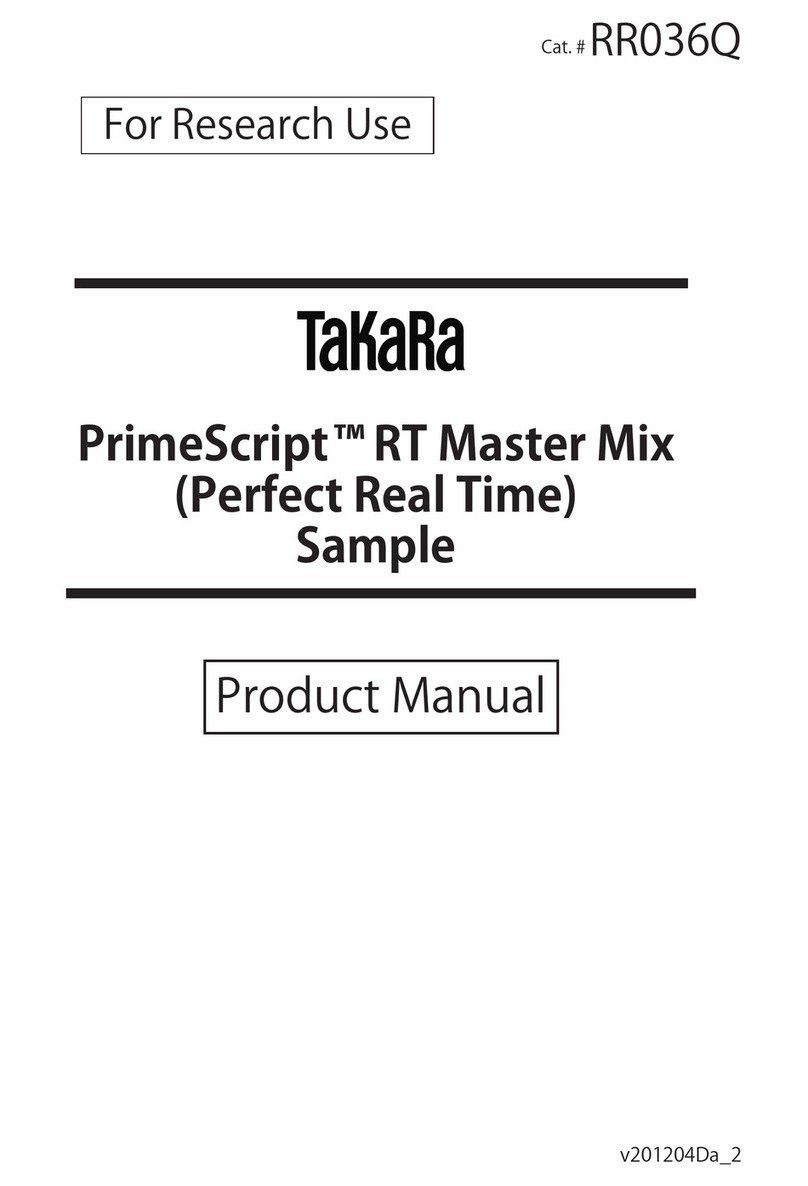
NEC
NEC NEC Express5800 Series user guide

Bull
Bull NovaScale T810B F2 manual
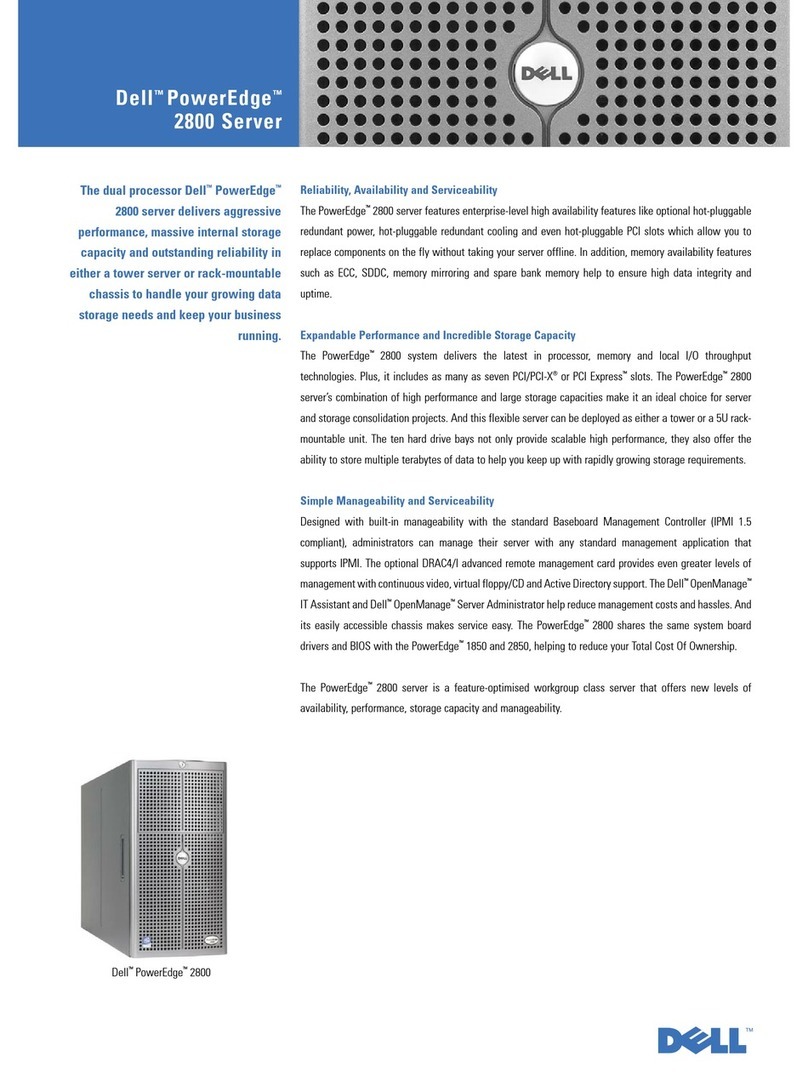
Dell
Dell PowerEdge 2800 Specifications
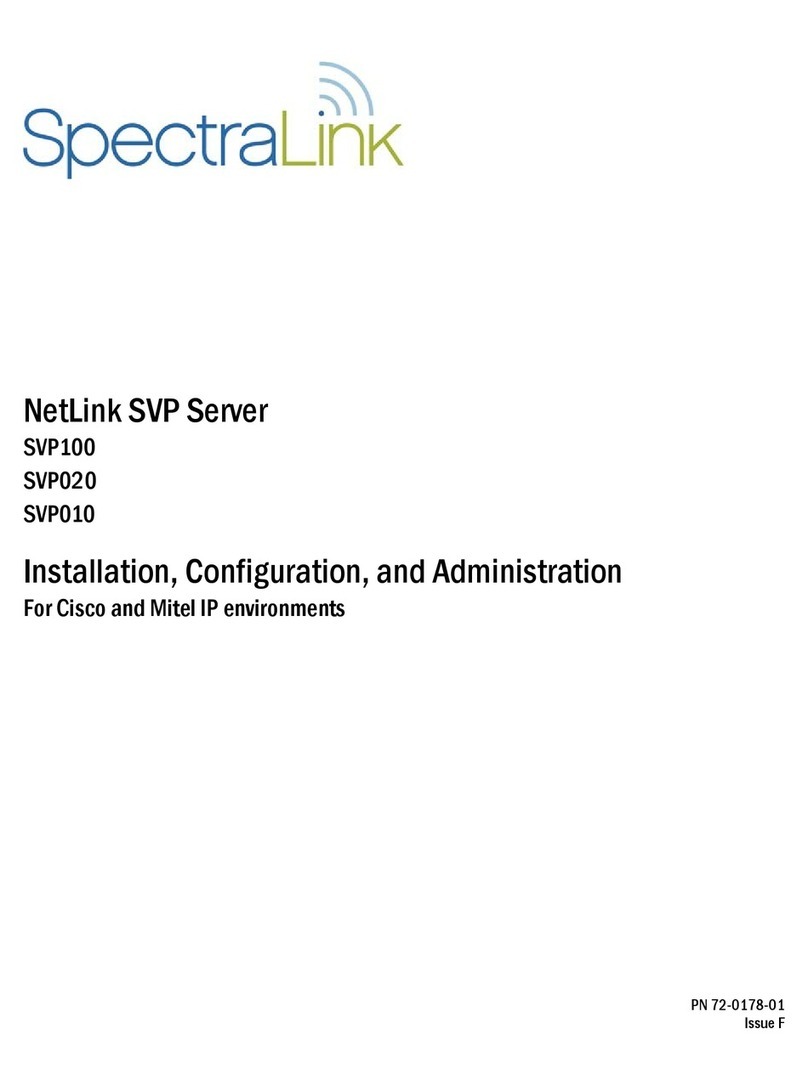
SpectraLink
SpectraLink NetLink SVP010 Installation, configuration and administration
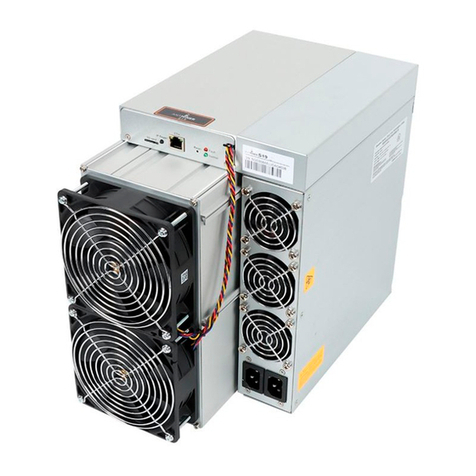
BITMAIN
BITMAIN ANTMINER S19a installation guide
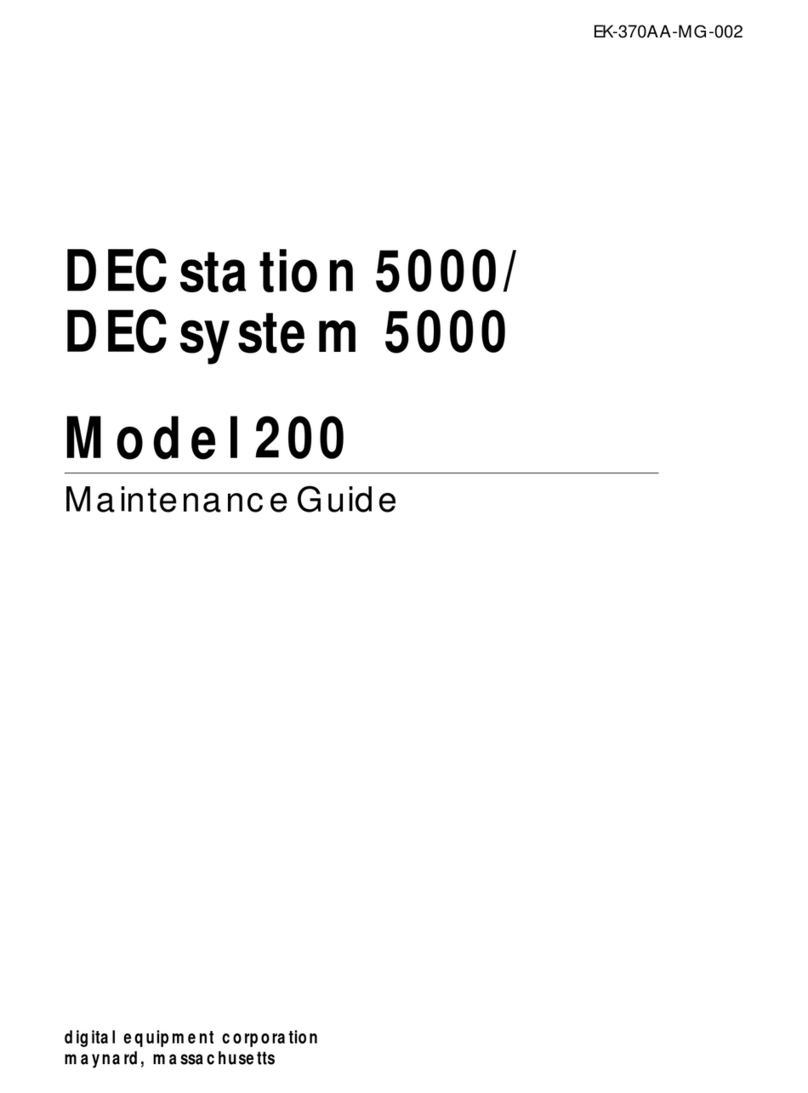
DEC
DEC DECstation 5000 Model 100 Series Maintenance Guide
